Gough’s got it all
Full of cool eateries and stylish boutiques, we took a stroll down this Noho hotspot to give you a quick peek at the best of the best. From where to get the best egg waffles in Hong Kong, to where to stock up on jewellery and homeware. Happy wandering!
What to Eat and Drink:
Gingko House
Good for: Local vegetarian food, made from the freshest ingredients
This Chinese restaurant uses organic vegetables sourced from the Lohas Organic Farm, whilst also providing employment opportunities and skills education for the elderly in Hong Kong. A fantastic social enterprise, this restaurant gives back to the community with every dollar you spend.
Gingko House, 44 Gough Street, Central, Hong Kong, 2810 9211, www.gingkohouse.hk
Da Ma
Good for: Juices and smoothies
Whether you’re looking for a detox, a cleanse, or a juice packed with superfood, you’ll find it here. With a wide range of fresh fruit on offer, the juices and smoothies at Da Ma are packed with goodness and made fresh to order.
Da Ma, G/F, 33 Gough Street, Central, Hong Kong, 2338 882, www.facebook.com/DAMAjuice

Gough’s on Gough
Good For: Trendy cocktails
Newly opened on Gough is the stylish and elegant new restaurant and bar by furniture designer Timothy Oulton, Gough’s on Gough. As the brand’s first foray into the F&B scene, it has certainly shown it knows how to design a space with the label’s iconic, British heritage style evident throughout. Word on the street is that the food is just as good as the décor.
Gough’s on Gough, G/F-2/F 15 Gough Street, Central, Hong Kong, 2473 9066, www.facebook.com/goughsongough
Read more: Gough’s on Gough: It’s A Full Dining Experience
Kau Kee
Good for: Treating yourself to a cheeky bowl of its famous beef brisket noodles or beef tendon curry.
If you walked past Kau Kee without giving it a second look, we wouldn’t blame you – it’s pretty low-key. Having been stationed on Gough Street for close to 90 years, the chefs here clearly know what they’re doing, and the daily lunch and dinnertime crowds are testament to that! Kau Kee often packs out (especially on weeknights and Saturday afternoons, when it’s not uncommon to see a long line snaking out the door and onto the footpath), so be prepared for a wait!
Kau Kee, G/F, 21 Gough Street, Central, Hong Kong, 2850 5967
Elephant Grounds
Good for: The perfect coffee (and ice cream sandwiches!)
Located in the super cool Woaw Store on Gough Street, this elegant coffee shop is one of many springing up throughout the city. Boasting delicious coffee, made from the finest beans and roasted to perfection, this is a must for all coffee lovers. And ice cream fans, don’t forget to try out one of EG’s famous ice cream sandwiches whilst you’re here.
Elephant Grounds, 11 Gough Street, Central, Hong Kong, 2253 1313, www.elephantgrounds.com

Oddies
Good for: The best gelato and egg waffles in town. Need we say more?
Combining low-fat Italian gelato, with the much-loved Hong Kong egg waffles, these ice cream sundaes provide a contrast in textures that is just delicious. Perfect for a sweet treat during those sticky summer days, and for Instagram snapping!
Oddies, G/F 45 Gough Street Central, 2750 2111, www.facebook.com/oddiesfoodies
Shanghai Lane
Good for: Tasty and comforting dumplings – perfect for when you’re feeling under the weather!
Tucked away on Gough Street, this family-run joint is cheap and super cheerful. Two thumbs up for the owners, who make sure you’re happy and look after you like you’re one of their own – and the food is great too – we love the pork and pak choy dumplings.
Shanghai Lane, 35-37 Gough Street, Central, Hong Kong, 2850 7788, www.shanghailane.com.hk
Sama Curry Café
Good for: A casual lunch time bite at a reasonable price.
Choose the spice level for your soup base and your toppings at this cute curry café. With a whole host of various vegetables and meat to add to your soup you’ll be sure to get the exact meal you want. Using ramen style broth as a base, this sumptuous curry hails from Japan and is oozing with flavour.
Sama Curry Café, 51 Gough Street, Central, Hong Kong, 2191 8850, sama.com.hk
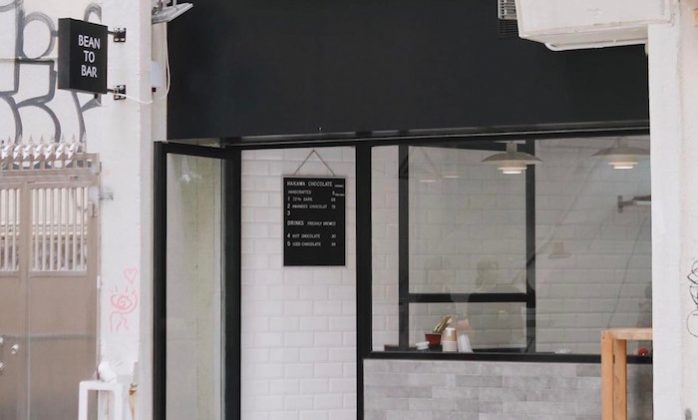
Hakawa Chocolates
Good for: Slipping into a sugar coma.
Making decadent, delicious chocolate from scratch, Hakawa Chocolates is a must for any chocoholic. The shop prides itself on a range of different flavours that are 72 per cent cacao, made from beans sourced in Sri Lanka. The bean-to-bar process is overseen completely by the resident chocolatiers who are passionate about providing an excellent product.
Hakawa Chocolates, Shop 1B, 49-51A Gough Street, Central, Hong Kong, 6163 3563, www.facebook.com/HakawaChocolate
agnès b. Café L.P.G
Good for: Checking out the loveliest of all agnès b. Cafes in town!
There seem to be agnès b. Cafés sprouting up all over town at the moment, but – given its quaint Gough Street setting, terrace seating and its onsite agnès b. Fleuriste, which sells the prettiest (but pricey!) roses, tulips and peonies – this one gets our vote. agnès b. Café offers French food with a modern lunchtime twist. With Croque Monsieurs, crêpes, soups, salads, sandwiches, omelettes and pastas, there will be something on the menu to tempt every taste bud. On the sweeter side, the open bakery offers a mix of desserts from gâteaus to pastries.
Agnès b. Café L.P.G, G/F, Chung San House, 8-10 Gough Street, Central, Hong Kong, 2563 9393, www.agnesb-lepaingrille.com/cafehk
Min Saam Gun
Good for: Japanese style beef noodles
Create the soup you want, the way you want it. Start with a choice of beef cuts (cooked to your liking), add your choice of broth, choose the texture of the noodles, and, finally, add any additional ingredients to the bowl. Bespoke soup cooked to perfection.
Min Saam Gun, 43 Gough Street, Central, Hong Kong, 2388 6982

Lobster and Muscles
Good for: Lobster (the clue’s in the title)
This elegant eatery offers up delicious lobster dishes including whole lobsters, lobster roll and lobster risotto. It also does a great take on traditional fish and chips, along with a great lunch menu, and a brunch with bubbles (my favourite!).
Lobster and Muscles, G/F, 16 Gough Street, Central, Hong Kong, 2815 8003, www.lobsterandmussels.com
Shugetsu Ramen
Good for: Authentic Japanese ramen
You may have to prepare yourself for a bit of a wait, but if you’re craving traditional tsukemen, these Japanese dipping noodles are definitely worth the lunchtime queue. All dishes are made fresh in house, with handmade noodles and dumplings.
Shugetsu Ramen, G/F 5 Gough Street, Central, Hong Kong, 2850 6009, www.shugetsu.com.hk
Ms B’s Cakery
Good for: Celebration cakes for special occasions
Lady in Red, Madame Butterfly, Better Than Sex, OMG! – the names of Ms B’s cake creations pack almost as much punch as the unique flavours. Whether you’re craving something sweet, or are on the hunt for a decadent dessert, this little cakery always seems to be buzzing – especially on weekends. The only downfall (if that’s possible with cake), is that you can only buy the mini cakes in sets of three.
Mrs B’s Cakery, G/F, 39 Gough Street, Central, Hong Kong, 2815 8303, www.msbscakery.hk
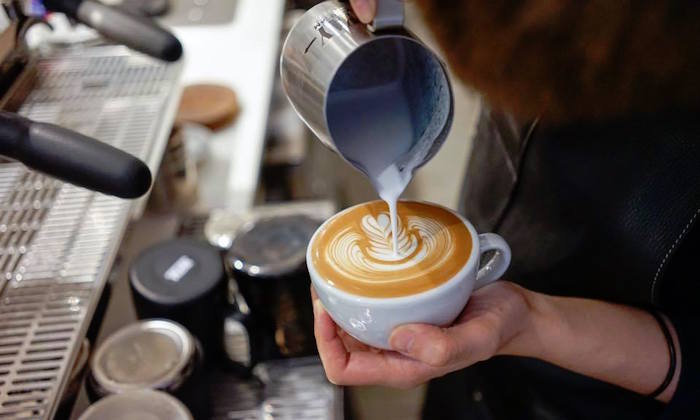
NOC Coffee
Good for: A latte with the perfect foam art
NOC Coffee Co has brought its cool, minimalistic vibes to Gough Street and we couldn’t be happier about it! This location has great coffee, ample space for you to set up for the day and a menu full of delicious food. The baristas know exactly what they’re doing, so if you’re in need of some inspo, ask them for some guidance and you’ll walk out satisfied.
NOC Coffee, 18 Gough Street, Central, Hong Kong, www.facebook.com/NOCCoffeeCoGoughStreet
Ginger
Although not technically on Gough Street, this little bar tucked away off Gough on On Wo Lane is worth a visit. Serving only whiskey and craft beer, Ginger great for a quick nip or when you want to kick up your heels or hang with your mates.
Ginger, G/F, 12 On Wo Lane, Central, Hong Kong, www.facebook.com/barginger.hk
What to Do:
Timothy Oulton
Good for: A range of women’s and men’s bags in classic colours and styles (including satchels, totes and shoulder bags), with vintage aesthetics and distressed finishes.
The British designer behind Gough’s on Gough also has his own furniture store on Gough. His British heritage hallmark is widely evident here, so don’t be surprised to see the Union Jack proudly featuring on the wall hangings and on armchairs. If you are on the lookout for a light installation (and willing to part with some significant moolah!), look no further than the range of stunning chandeliers, encased in wrought iron intertwining circular rings – the hip London club, Boujis’ Hong Kong, couldn’t resist these either!
Timothy Oulton, G/F, 15 Gough Street, Central, Hong Kong, 2161 1742, www.timothyoulton.com/stores/hong-kong-inspiration-store

Uber x Tunique
Über Tunique describes itself as a “one-stop, multi-trend, costume jewellery shop, where ethnic chic meets rock, glam, bohemian and kitsch.” This lifestyle concept store encourages you to find unique costume jewellery to maximize your style. The store features pieces exclusively designed for it, along with other selected brands.
Uber x Tunique, 12 Gough Street, Central, Hong Kong, 2896 0329, www.tunique.com
Marco Visconti
Good for: Easy office attire at reasonable prices
This Hong Kong retailer is one we Sassy girls know and love. Marco Visconti makes perfectly wearable pieces that will take you from the office to out on the town in a flash.
Marco Visconti, G/F, 14 Gough Street, Central, Hong Kong, 2803 2307, www.marco-visconti.com
Mr Blacksmith
Good for: Practical gifts for the men in your life, or good housewarming presents!
This is a designware store with the emphasis on ‘ware’ – ‘hardware’ that is. Here you will find lettered key hooks, paintbrushes, steel clips, quirky measuring tapes, Victoria & Albert hammers and more. Even its business card is made out of sandpaper! Home furnishings with a masculine vibe are dotted throughout Mr Blacksmith, perfect for adding finishing touches to your home without fuss and frills.
Mr. Blacksmith, G/F, 7 Gough Street, Central, Hong Kong, 2581 1110, www.homelessexpress.com/pages/visit-our-store
Homeless
Good for: Making your house (or apartment!) a home, with creative yet functional homely additions.
With two flagship stores scattered along Gough Street, Homeless dominates the streetscape with its very stylish designer home furniture, lighting and home décor accessories. Sit down with the in-house design team to create your own original piece of ‘Homeless’ furniture, or choose from over 30 international brands.
Homeless, G/F, 28 & 29 Gough Street, Central, Hong Kong, 2851 1160 or 2581 1880
Visionaire
Good for: Quirky, original buys are Visionaire’s specialty. Who would have thought a wooden wine case could be turned into a luxurious jewellery box?!
This super innovative lifestyle store features products and brands from around the globe. Its most popular item has to be the LED lights by Character, a Finnish design company that uses alphabetical letters from infamous logos like H&M, Samsung and McDonalds. Imagine the ‘Y’ from SONY illuminated and affixed to your living room wall – now that is what we call a feature wall! Check out the calico alphabet bags which are perfect for a trip to the wet markets; brides will just love the Wedding Series too.
Visionaire, G/F, 26 Gough Street, Central, Hong Kong, 2745 6868, www.visionaire.hk
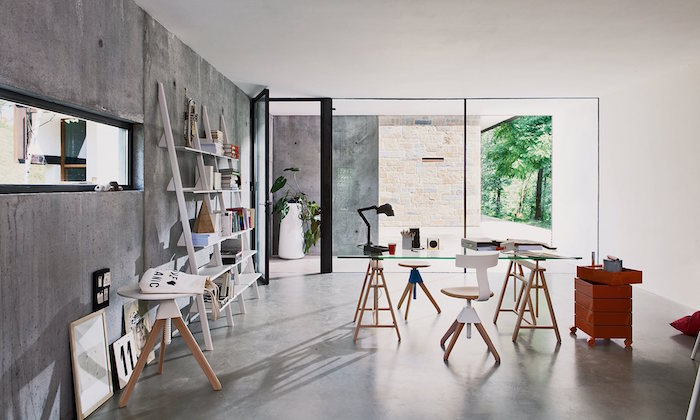
Magis
Good for: Sleek and stylish furniture
The iconic chairs on sale in Magis could transform any living space. Innovative and cutting-edge designs make for some beautifully quirky pieces that will definitely be a talking point at any dinner party.
Magis, 28 Gough Street, Central, Hong Kong, 2110 5056, www.magis.com.hk/en
Miss Julie
Good for: Stand out jewellery for your next occasion
This stylish boutique is the perfect place to find stunning jewellery to set off any outfit. With a range of styles to suit varying tastes, there is something for everyone here. The designs are gorgeous, with delicate pieces for everyday wear, and its stand out selections will dazzle at your next event.
Miss Julie, 1/F 28 Gough Street, Central, Hong Kong, www.missjulie.com.hk
Rare
Good for: Rare antique furniture
The clue once again is in the name as Rare features unique antiques, many of which are extremely (ahem) rare. Some of the pieces have inspired Timothy Oulton’s furniture (found in the sister store a couple of doors down), and all are carefully sourced and managed to ensure quality. Some of them are quite simply gorgeous, and this place is definitely worth a look if you want to find stand out items for your home.
Rare, G/F, 19 Gough Street, Central, Hong Kong, 2331 3609, rarebyoulton.com
Sleeep
Hong Kong’s first capsule hotel has now arrived on Gough Street. With hourly rates on offer, these sleep pods are a great place for busy professionals to recharge. The online check in and keyless entry make it easy to grab a couple of hours sleep on the go.
Sleeep, 242 Queen’s Road Central (on Gough Street stairs), Sheung Wan, Hong Kong, sleeep.io
Caudalie
Good For: Pamper yourself at this delectable Spa
This Spa boutique is based on Caudalie’s famous Vinothérapie®Spa in Europe, and oozes French elegance. The entrance even has a wine cellar look to it, with an arch made out of imported French stone. We recommend the Vinoperfect Radiance Facial; not only will your skin genuinely look and feel better afterwards, but the overall pampering experience will leave you feeling so refreshed.
Caudalie, 3 Gough Street, Central, Hong Kong, hk-en.caudalie.com
Editor’s Note: This post was originally written by Sophie, published on 23 October 2013, and was updated by Carrie Johnson on 21 July 2017.



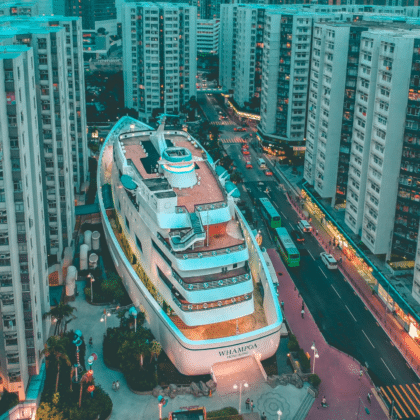

 Eat & Drink
Eat & Drink



 Travel
Travel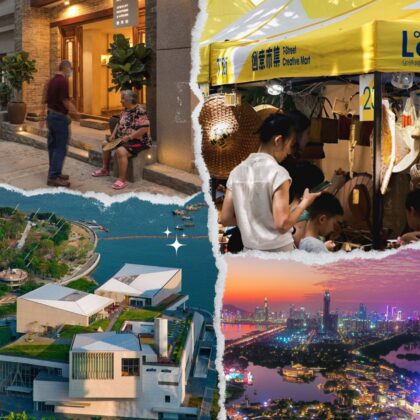

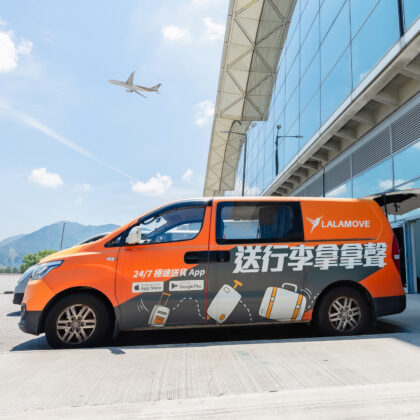

 Style
Style



 Beauty
Beauty



 Health & Wellness
Health & Wellness
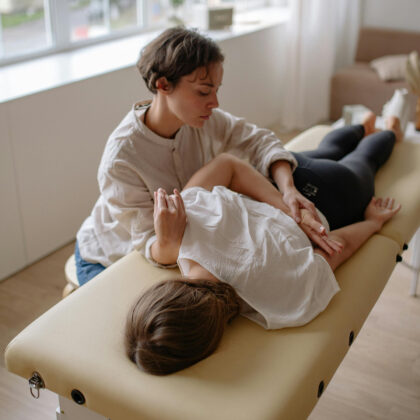


 Home & Decor
Home & Decor



 Lifestyle
Lifestyle


 Weddings
Weddings





